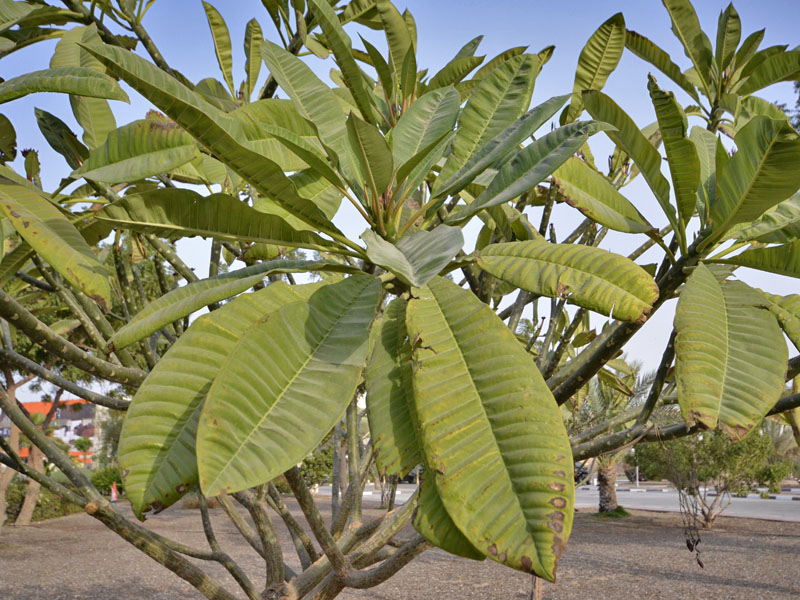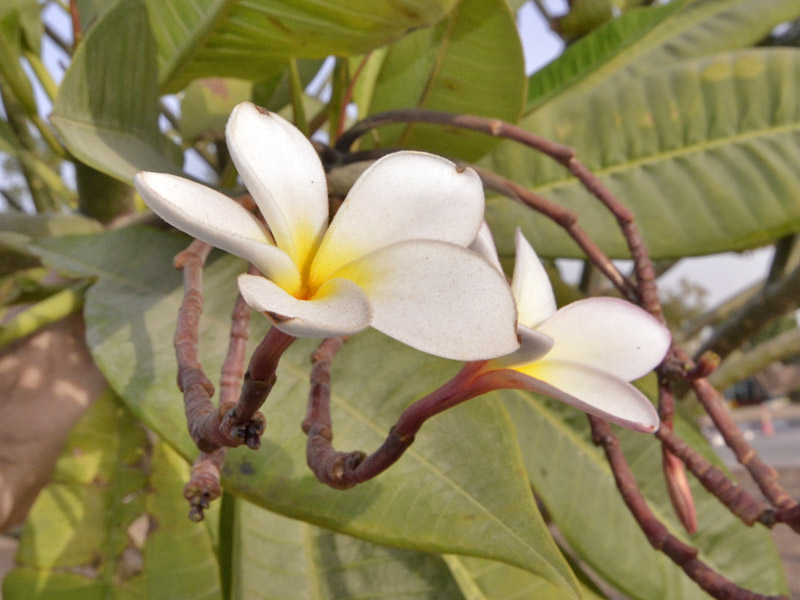
Tropicals > Plumeria > Plumeria obtusa > Plumeria obtusa
Plumeria obtusa
Nosegay, Plumeria, Frangipani, Temple Tree, Graveyard Tree, Australia: Dead Man's Fingers, Thailand and Laos: Champa, Malaysia: Cempacka, Cambodia: Champei, India: Champaca or Campa
Origin: The genus Plumeria were named by Linnaeus in honour of the French botanist Charles Plumier (1646 - 1704), who he considered the first to describe the tree after one of several voyages to the Antilles. It was actually first described by the Spanish priest Francisco Mendoza in 1522. The common name Frangipani is attributed to the Italian, Marquis Frangipani who developed a perfume from the plant in the 16th century. It was used on gloves (popularly worn at the time) and later applied to pastries. P. obtusa is native to Mexico.
Mike's
Opinion


"
This is one of my favourite tropical plants, more for its fragrance than the floral display. A whiff of its deep, perfumed scent sends me back to my years working in Thailand where I first encountered it and the Buddhist temple grounds where it is often found. It is the most common species in the southeast Asian peninsula.
Michael Pascoe, NDP., ODH., CLT., MSc. (Plant Conservation)
"
| Family |
| Apocynaceae |
| Genus |
| Plumeria |
| Species |
| obtusa |
| Category |
| Tropicals |
| Type |
| Tree (deciduous) |
| USDA Hardiness Zone |
| 10 - 12 |
| Canadian Hardiness Zone |
| Requires cool season protection under glass. |
| RHS Hardiness Zone |
| H1b - H3 |
| Temperature (°C) |
| -1 - 16 |
| Temperature (°F) |
| 30 - 60 |
| Height |
| 4.5 - 6 m |
Photographs
Description and Growing Information
Flowering Period
| General Description |
| Plumeria trees are one of the most widespread in the tropics since they are easy to propagate, flower for a long period in many colours and cope well with heat and humidity. It is not a big tree and can be quite variable in form and character depending on growing conditions and age. It may be completely denuded of leaves, appearing dead when water is inadequate yet when tropical rains are forthcoming it will be covered in large, glossy leaves and fragrant blooms. |
| Growth |
| Fast |
| Fruit Description |
| Leathery follicles are held in pairs and are grey-black in colour, 18 cm long, containing 20 - 60 winged seeds. |
| Notable Specimens |
| Sukhothai, Thailand |



